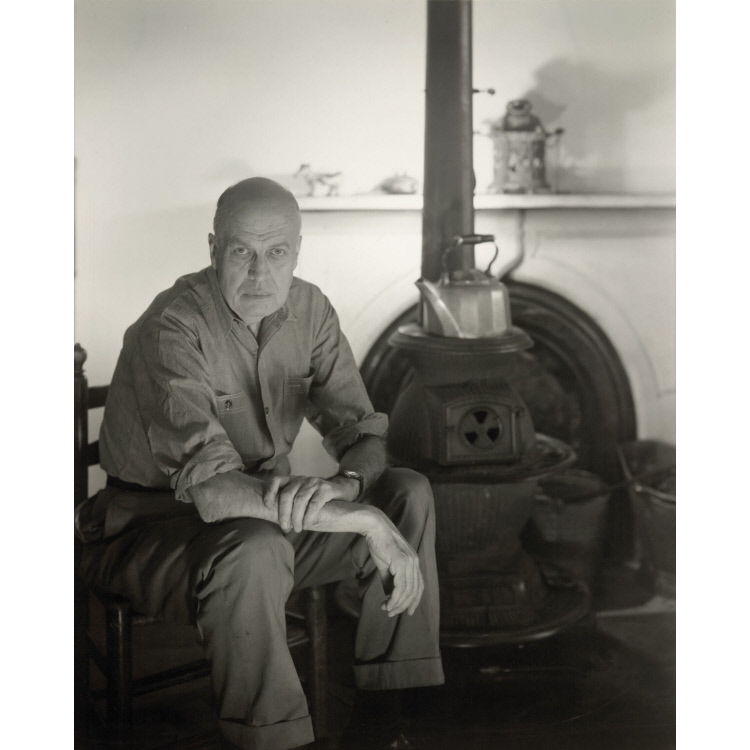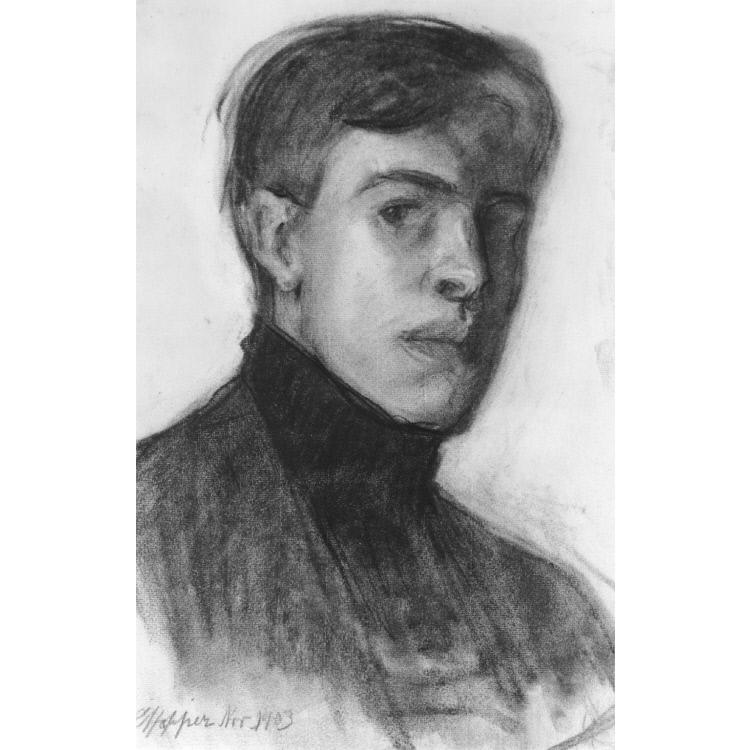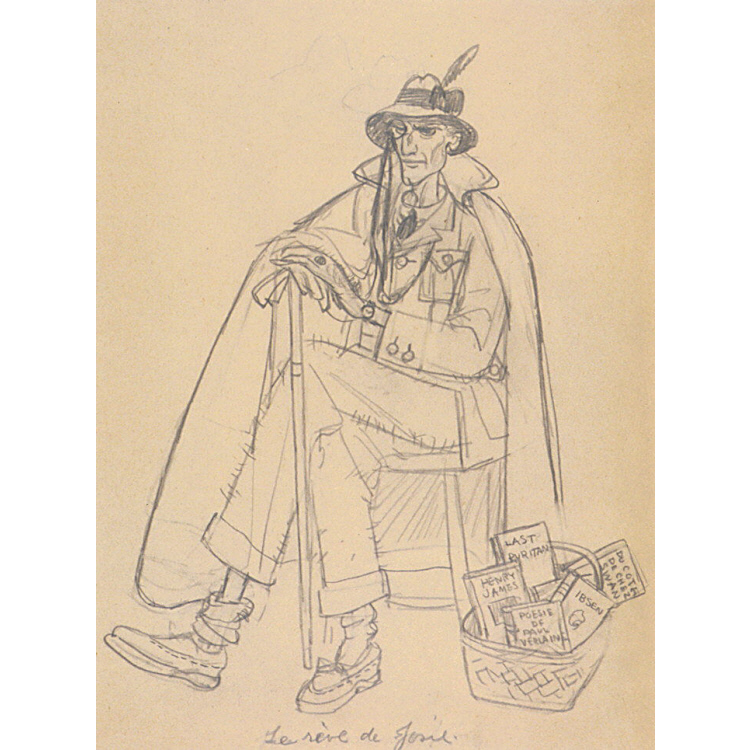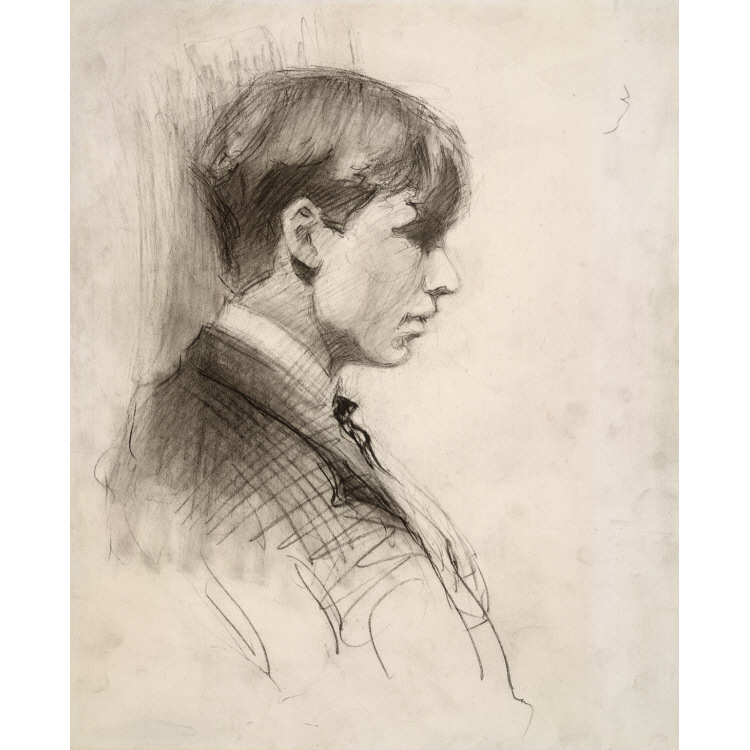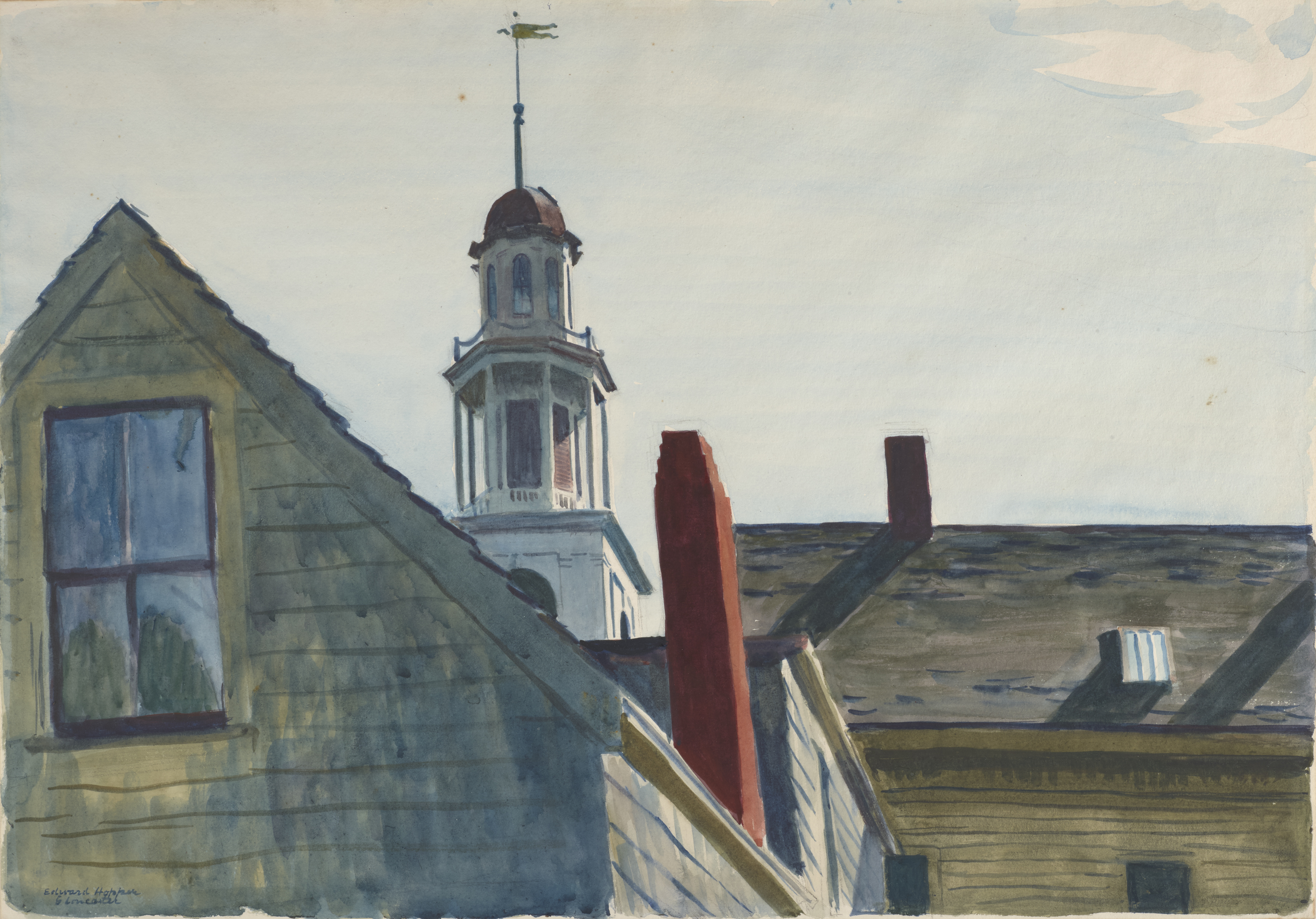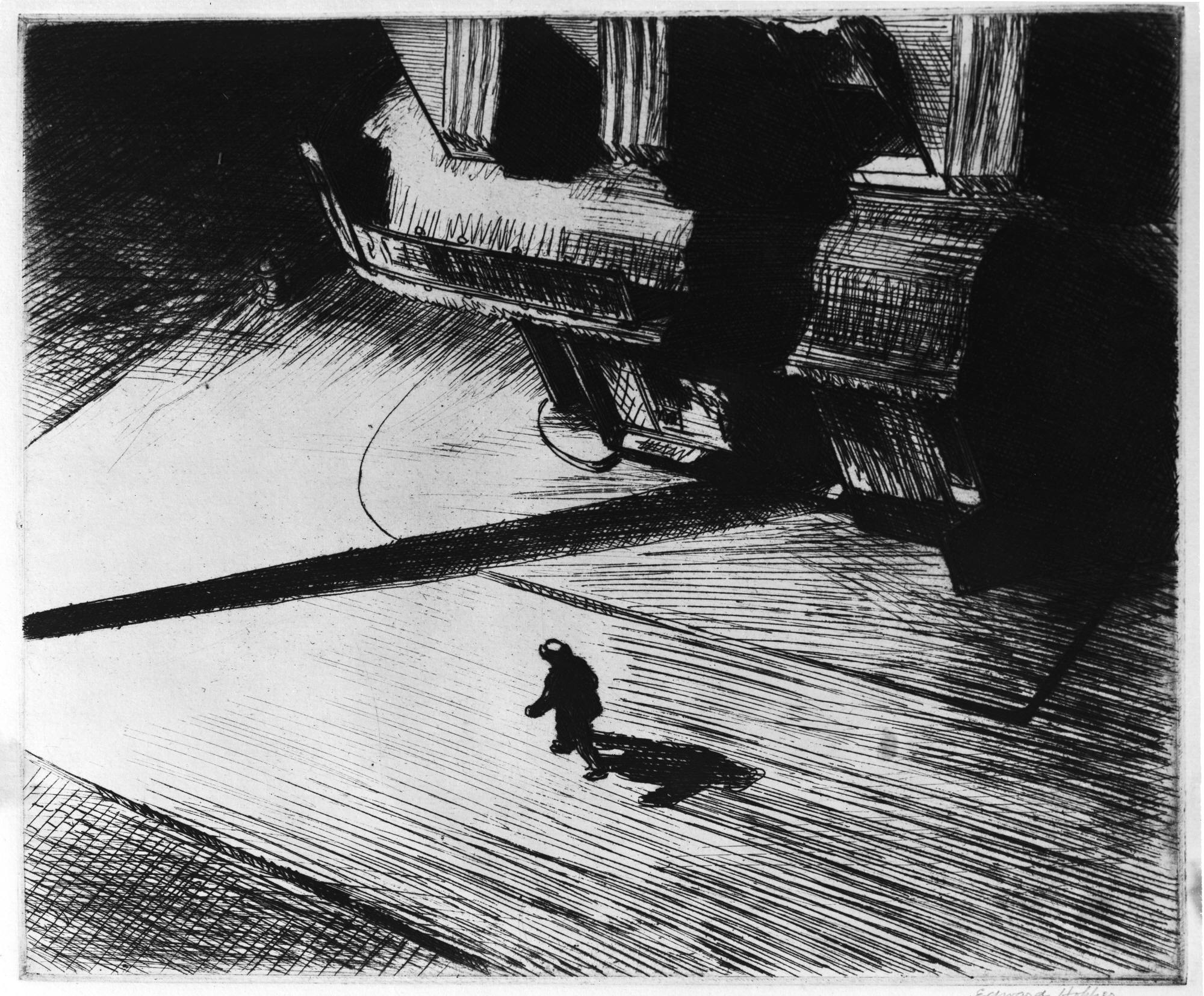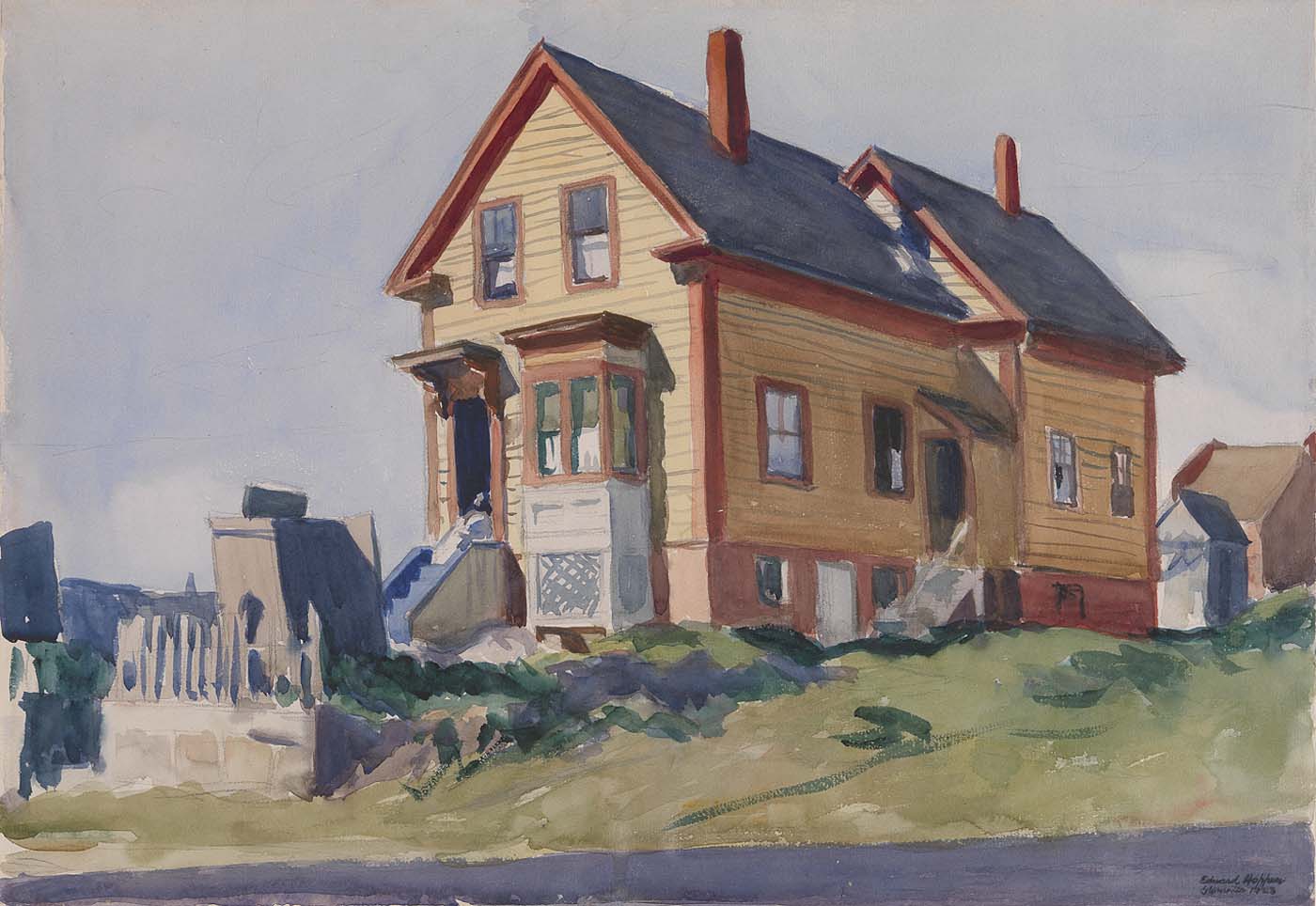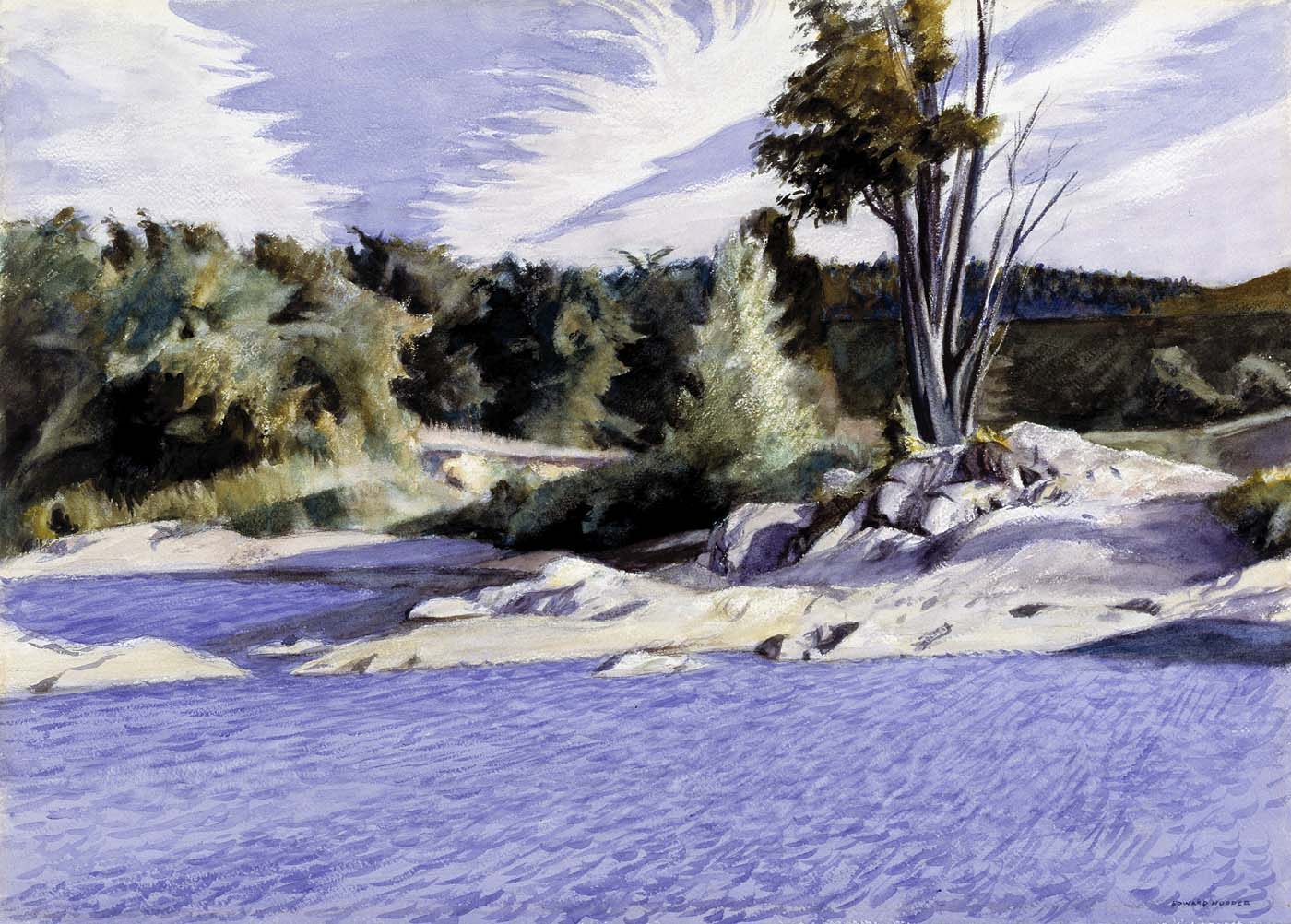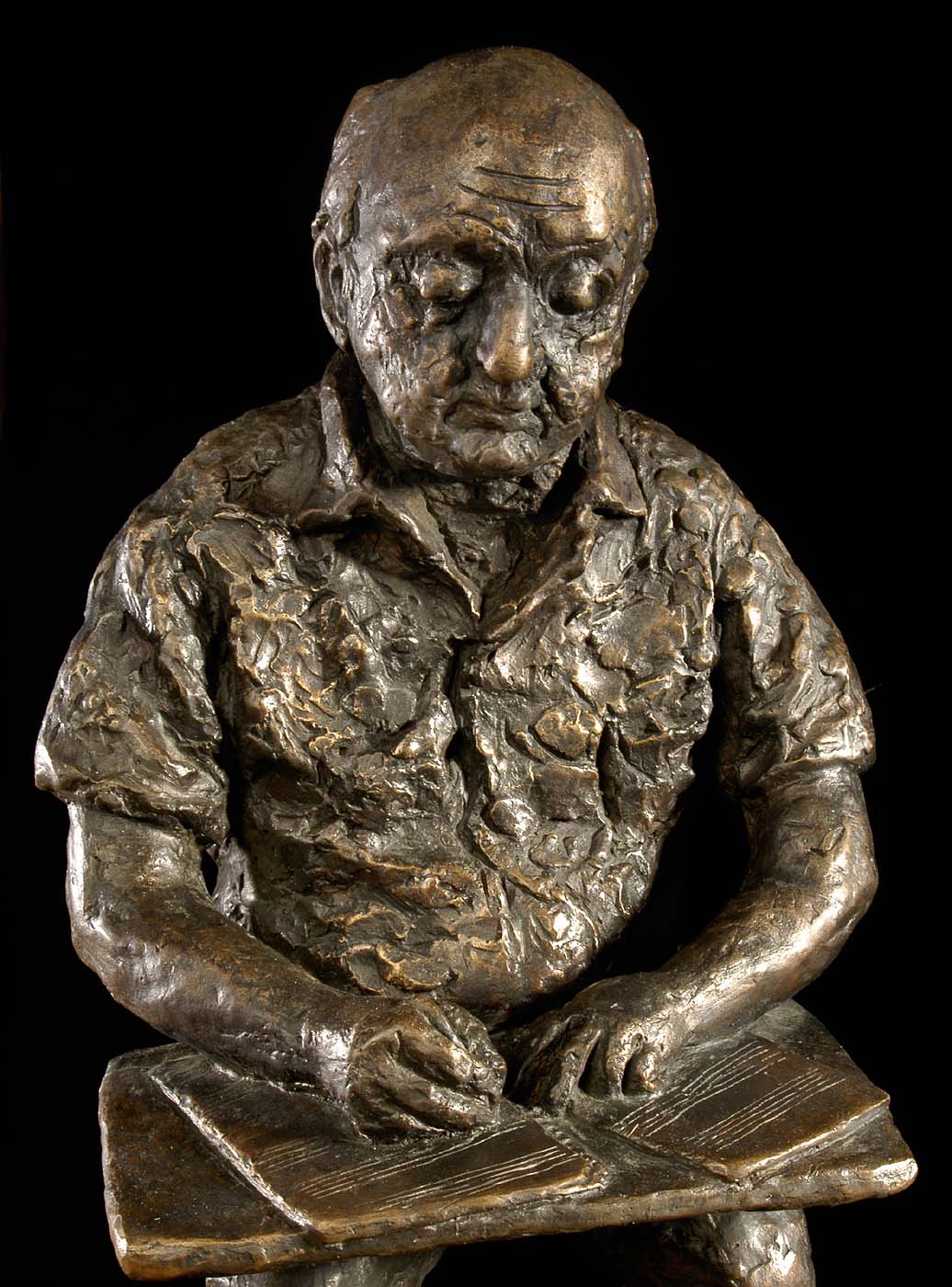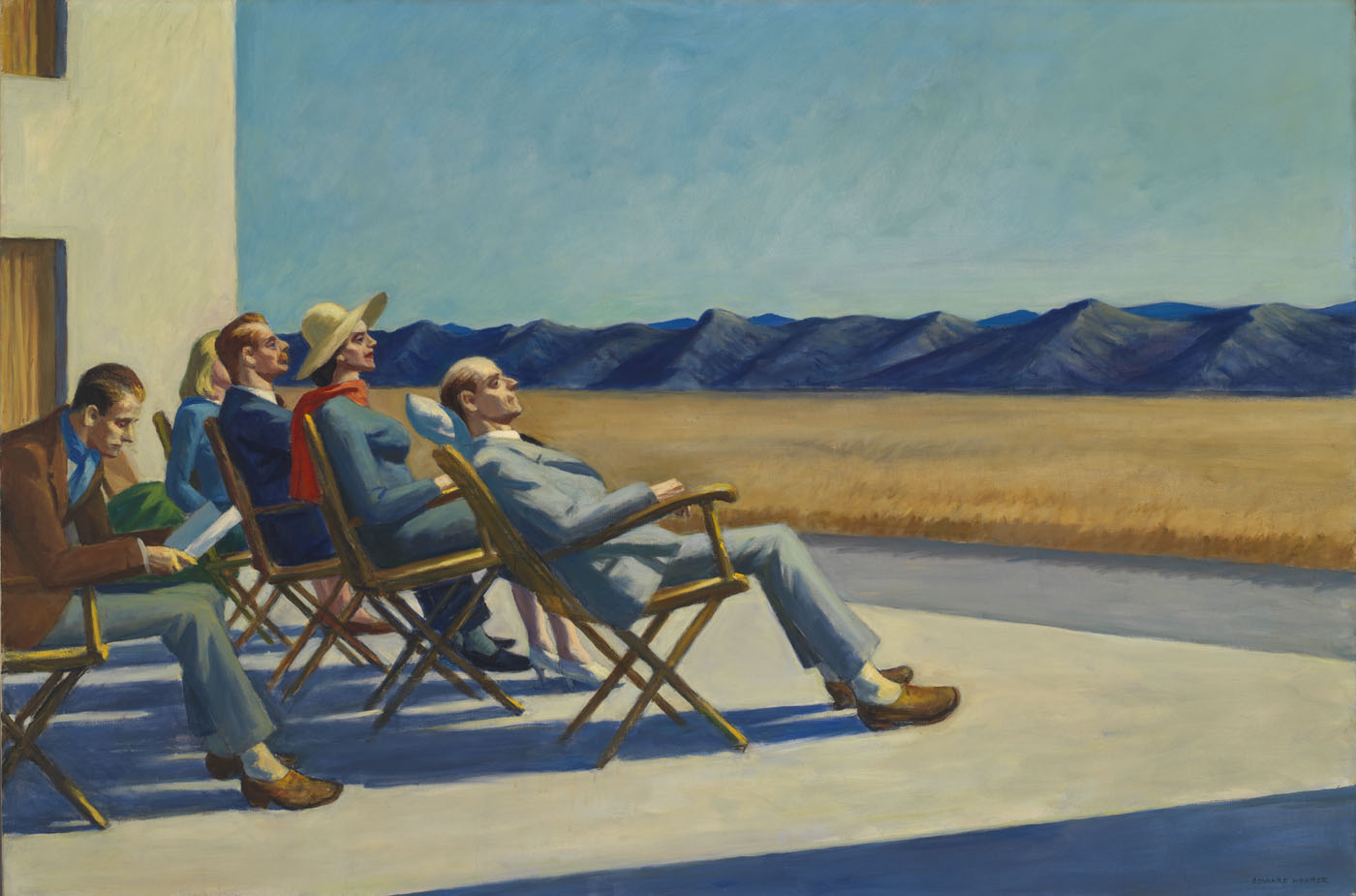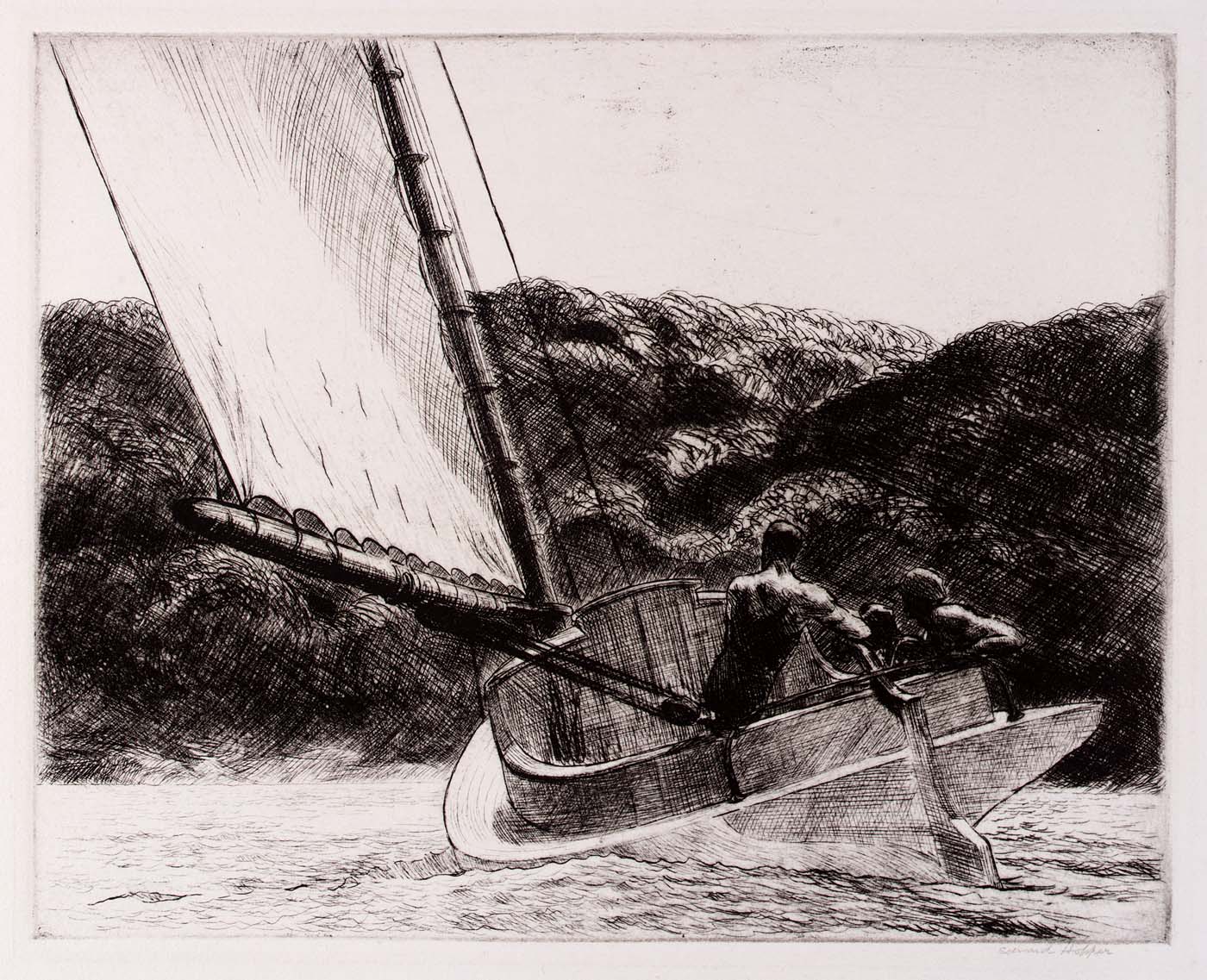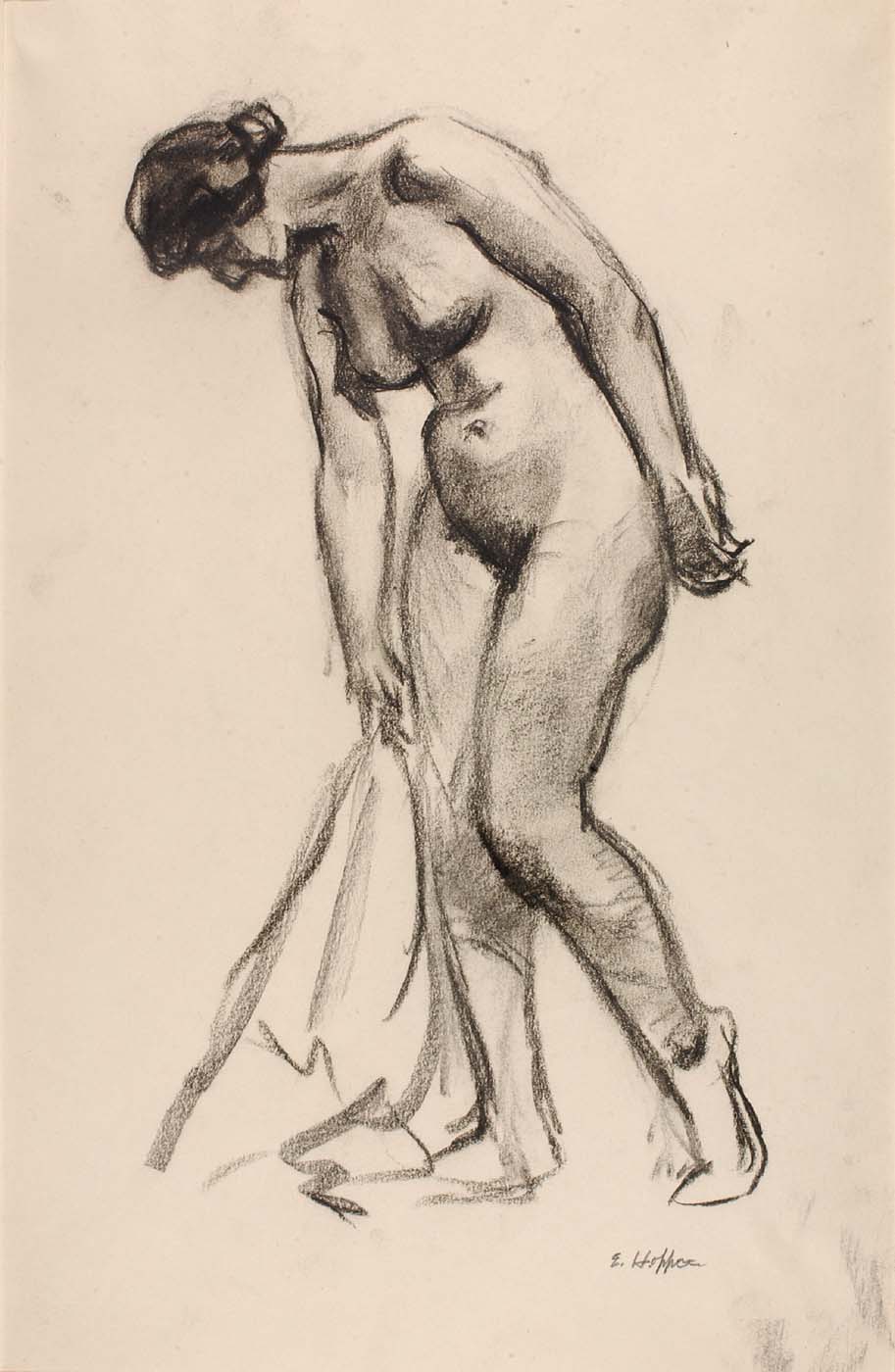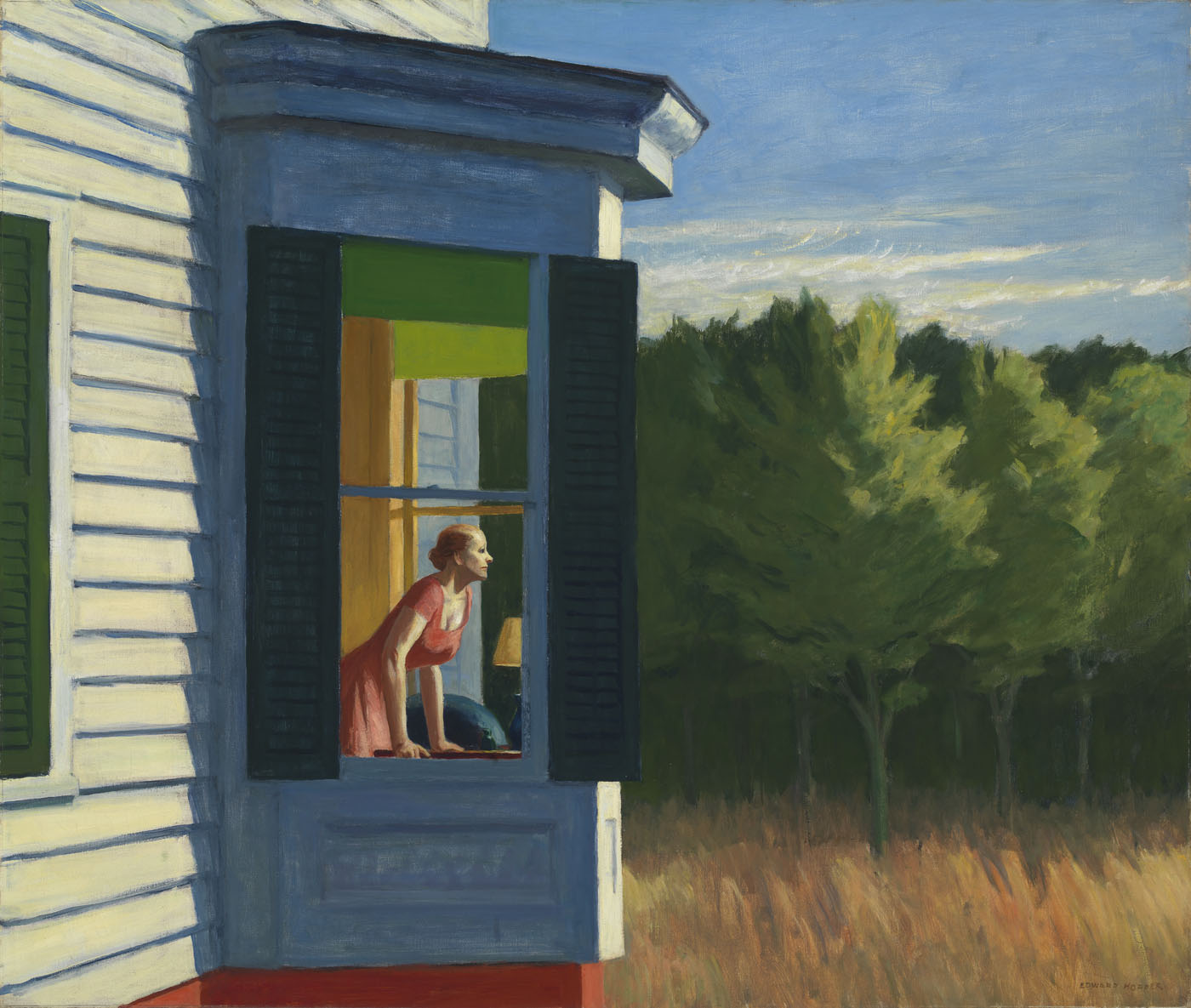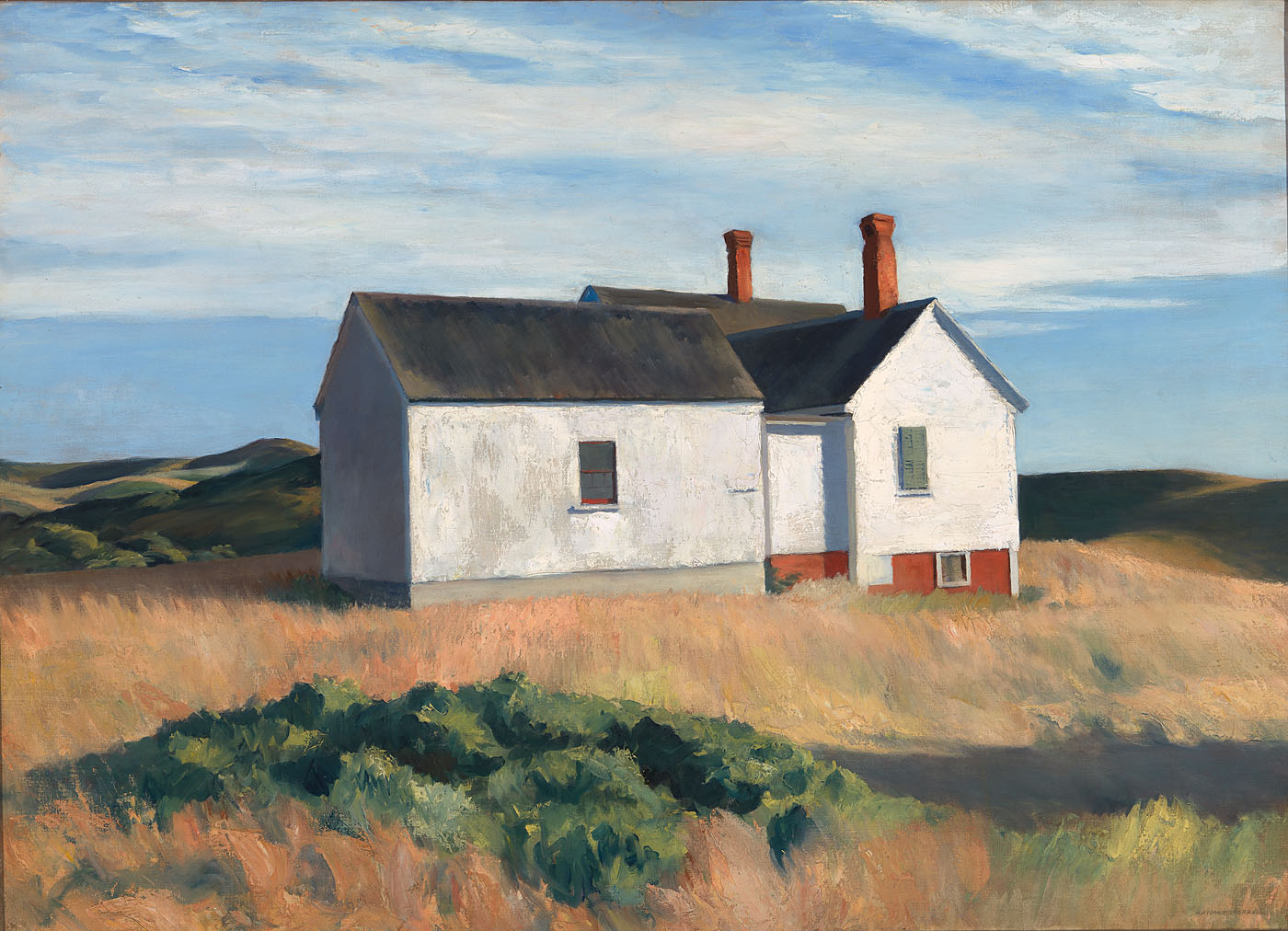Edward Hopper
Hopper was born in Nyack, New York, to a businessman and a housewife who encouraged his early drawing talent. In deference to his parents' wishes, Hopper began to study for a career as a commercial artist at the New York School of Illustrating, but soon followed his own inclination toward fine art, transferring to the New York School of Art. He studied there with Robert Henri. Jo Nivison, whom Hopper would later marry, was also enrolled at the school. Early in his career Hopper was described as a "Puritan" by his friend the painter Guy Pène du Bois. He equated the term with Hopper's purist style but also with personal moral rigor and Americanness, a description Hopper enthusiastically accepted. In a review of his first retrospective in 1933, Hopper's work was said to fulfill the "requirements of what was meant by racial quality in American art. Puritan austerity and nothing in excess ... above all independence of thought and spirit." Undoubtedly his New England subjects contributed to this view. At Jo's suggestion he began painting watercolors, as well as oils, of Gloucester streets, Maine and Massachusetts lighthouses, and Cape Cod landscapes. Although the couple lived in New York City, they traveled around New England every summer, finally building a house and studio in Truro on Cape Cod.
William H. Truettner and Roger B. Stein, editors, with contributions by Dona Brown, Thomas Andrew Denenberg, Judith K. Maxwell, Stephen Nissenbaum, Bruce Robertson, Roger B. Stein, and William H. Truettner. Picturing Old New England: Image and Memory (Washington, D.C.; New Haven, Conn; and London: National Museum of American Art with Yale University Press, 1999)


